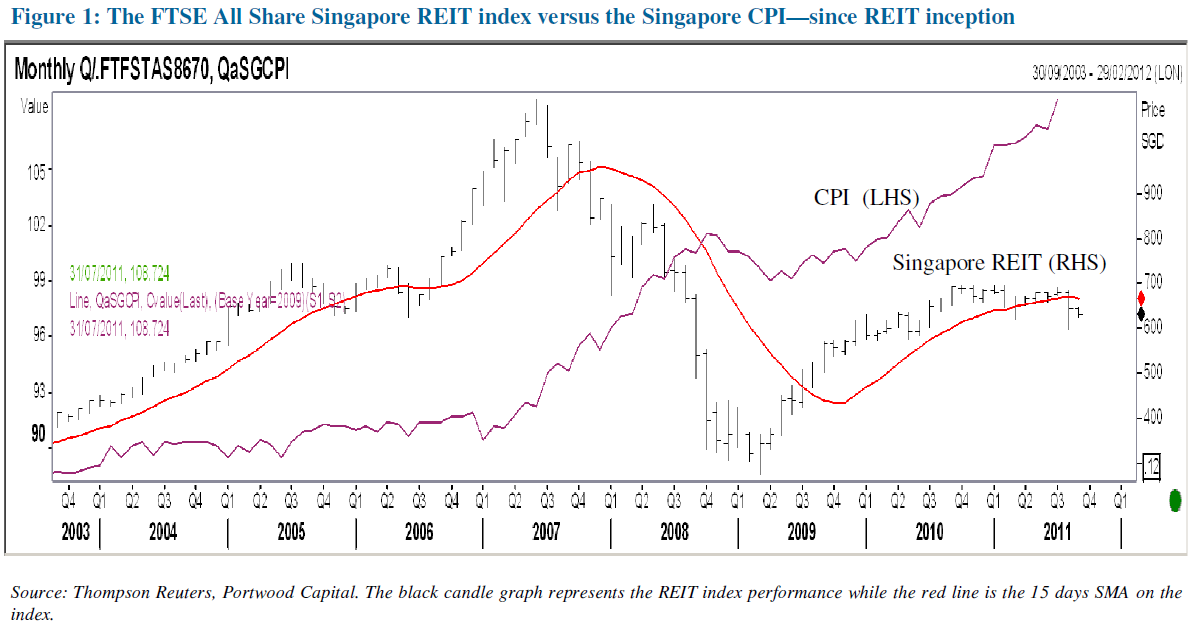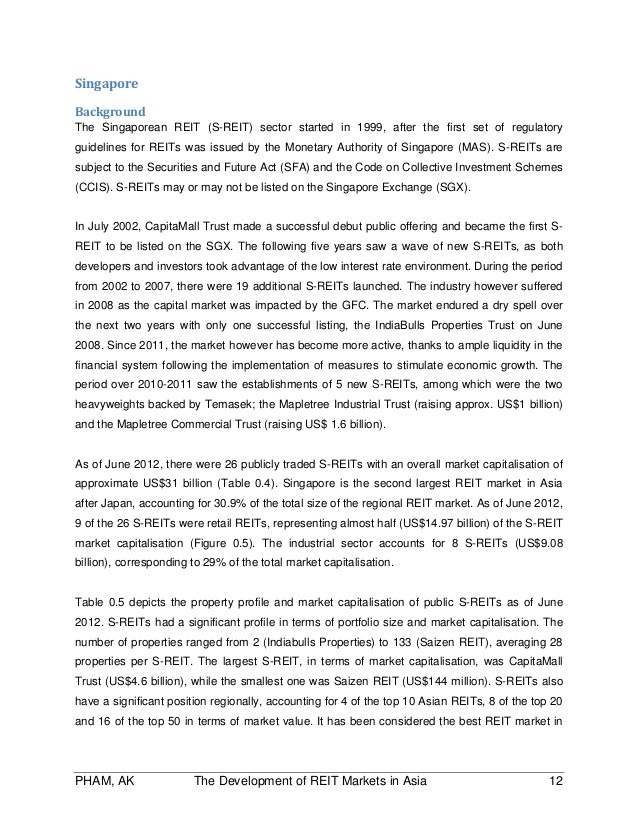Understanding Singapore REITS Part One REIT Categories
Post on: 30 Март, 2015 No Comment

I am writing this post in reply to a comment I received earlier about Singapore Real Estate Investment Trusts (SREITs). Over the past few months I have also had many enquiries about REITs in general. So I thought why not write a post about analyzing REITs? Before we begin, lets start with the definition of REITs. REITs are basically corporate entities which invest primarily in real estate and have various tax benefits. To qualify for the tax benefits, a REIT is required to distribute at least 90% of their taxable income to unit holders. This rule is very important as we note that since most of the profits are paid out as dividends, REITs do not retain much of the profits for debt redemptions, asset enhancement initiatives (AEIs) or acquisitions.
The first thing to understand about SREITs is that they invest in different types of properties. The classes of properties can be divided into office, retail, office/retail hybrids, industrial, healthcare, hospitality and residential. It is important to understand the property classes as each class is very different from one another, ranging from rental yields, defensiveness of rentals, rental increases, weighted average lease expiry (WALE) periods, leverage ratios and so on.
Healthcare REITS Very High Defensiveness / Medium Dividend Yields / Very Long WALE
Parkway Life REIT, First REIT
Healthcare REITs are the most defensive REITs on the Singapore stock exchange. However, there are only 2 healthcare reits listed currently; Parkway and First. Healthcare REITs have extremely long leases with hospitals from 10-20 year leases. These leases may also have guaranteed rental increases built in, hence the upside for these REITs are also guaranteed regardless of the economic environment. Healthcare is a basic necessity which cannot be foregone no matter how bad the economy is, people still need to go to hospitals and see doctors. First REIT focuses on Indonesian hospitals; however, the rentals are denominated in Singapore Dollars, so there is little foreign exchange risk. Healthcare REITs should be a part of everybodys stock portfolio.
Industrial REITS (General Industrials / Warehousing) Medium Defensiveness / High Dividend Yields / Long WALE
Ascendas REITS, Cache Logistics Trust, Cambridge Industrial Trust, Mapletree Logistics Trust, Mapletree Industrial Trust, Sabana REIT.
Industrial REITs are a good balance of defensiveness and high dividend yields of between 6%-10%. Industrial REITs can be loosely categorized into 2 types, general industrial properties and warehousing properties. REITs like Cambridge Industrial Trust, Mapletree Industrial Trust are more focused on general industrial properties which are mostly used for manufacturing purposes. REITs like Cache, Mapletree Logistics Trust are focused on warehousing properties which typically serve logistics purposes. The difference usually lies in the WALE. Warehousing trusts typically have longer WALE of 5 years or longer, while general industrial REITs may have WALE of 3-4 years. Warehousing trusts are therefore usually more resilient, but the tradeoff is rentals are normally locked in for long periods, hence they may not be able to take advantage of a rising rental environment.

Retail REITS High Defensiveness / Medium Dividend Yields / Medium WALE
CapitaMall Trust, Fraser Centerpoint Trust, LippoMall (Indonesia Only)
Retail REITs are very defensive, in particular the REIT which is purely suburban mall play like Fraser Centerpoint Trust. Even in a downturn, shoppers still need to go shopping and buy daily necessities, eat and watch movies etc. Typical dividend yields for retail REITs stand at about 5%-7%. What you give up in yields, you get in terms of resilience of rentals hence stable distributions. For investors who are highly risk adverse, retail REITs are one of the top choices. In fact, even during the 2008/2009 period, retail rentals did not really drop and occupancy rate remained high for most of the shopping malls. It is also quite easy to determine the performance of the properties under the REITs, you just go shopping in them! Theres nothing better than a physical site inspection to ensure the malls are well run, brisk business for tenants, crowd traffic is good and so on. Retail REITs also tend to benefit a lot from asset enhancement initiatives (AEI) as seen from the recent asset enhancements at Causway Point to update the mall and make it more attractive, bringing more visitors and raising rental as well.
To be continued tomorrow, we will discuss Office REITs, Retail / Office Hybrid REITs, Hospitality REITs and Residential REITs.
For further reading, you may be interested in:














